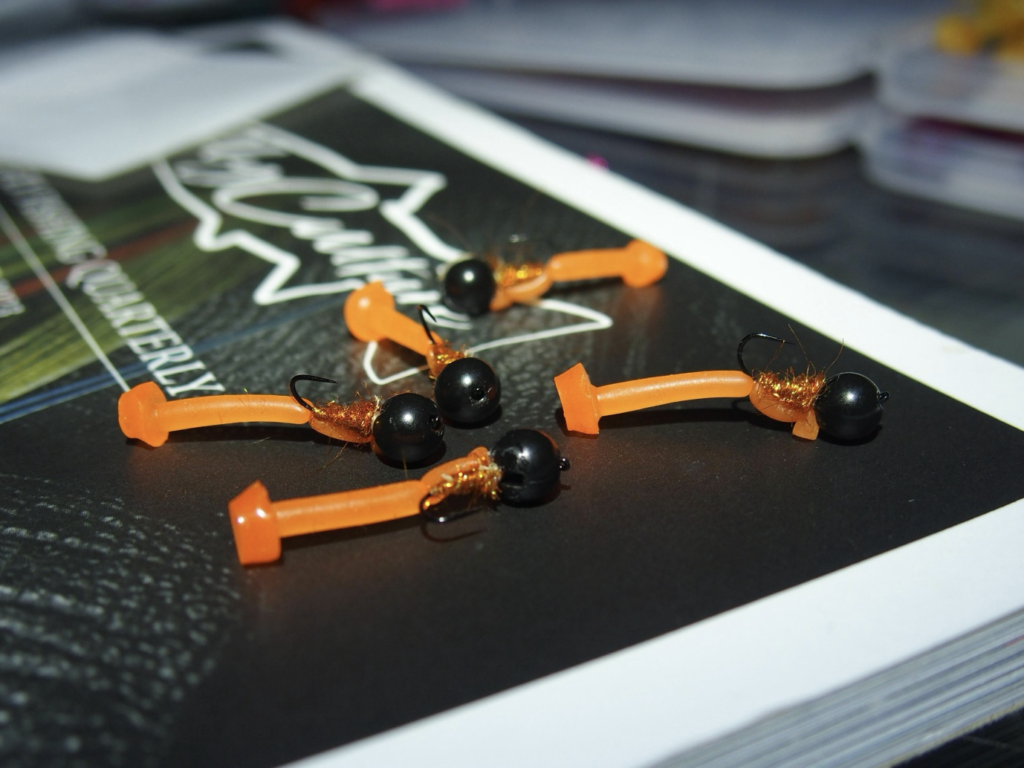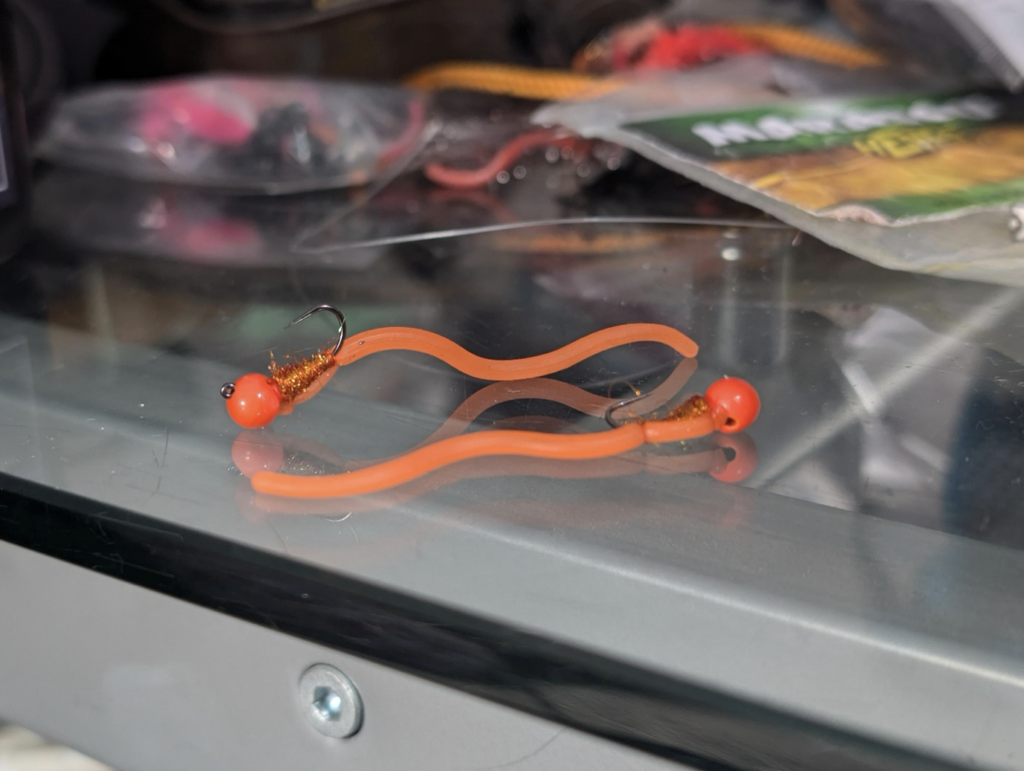Wrasse on the fly, with multi-species hunter, Elijah Wait
In this interview, we get into wrasse fishing fly tackle, the fly patterns that are best for wrasse fishing, and the methods deployed when targeting wrasse on the fly. Elijah Wait @eli_eli_oh__ is a team member at Learn the Land, and die-hard saltwater fly angler from Leicester, who has chased wrasse on the fly from Scotland through to the south of Norway. He’s the only man I’ve heard of to land a puffer fish on the fly, which is a good sign that we’ve found our guy…
From fresh water fly fishing to saltwater obsession…
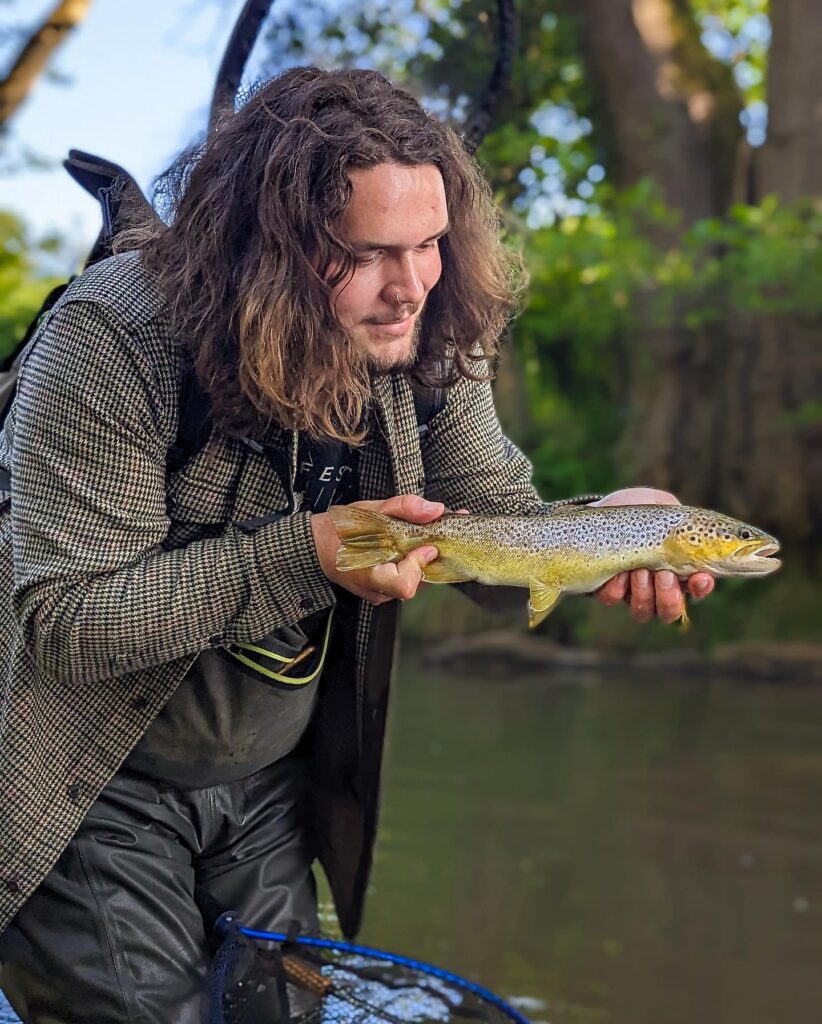

What got you into saltwater fly fishing?
I first fished in the sea with fly tackle may of 2022 on the Isle of Arran. It was a geology field trip in my first year of uni. I had been researching the fly fishing opportunities there and had planned to target sea trout from the shore during my downtime. I bought an 11ft2wt nymphing rod and a reel loaded with 8lb mono with me as well with the intention of using it to fish the small streams on the island.
In the end, the rod I had bought for the sea trout never saw much use, as on the advice of friend, I tried casting out as far as I could with the nymphing setup with a small squirmy and found it to be more fun than chucking out endless long lines into the deep blue with nothing to show for my efforts. I was catching small coalfish, pollack, codling, and scorpionfish off a small pier near my hotel, nothing of any real size, but plenty big enough to put a bend in my 2wt. Been doing as much saltwater fishing as I can since…
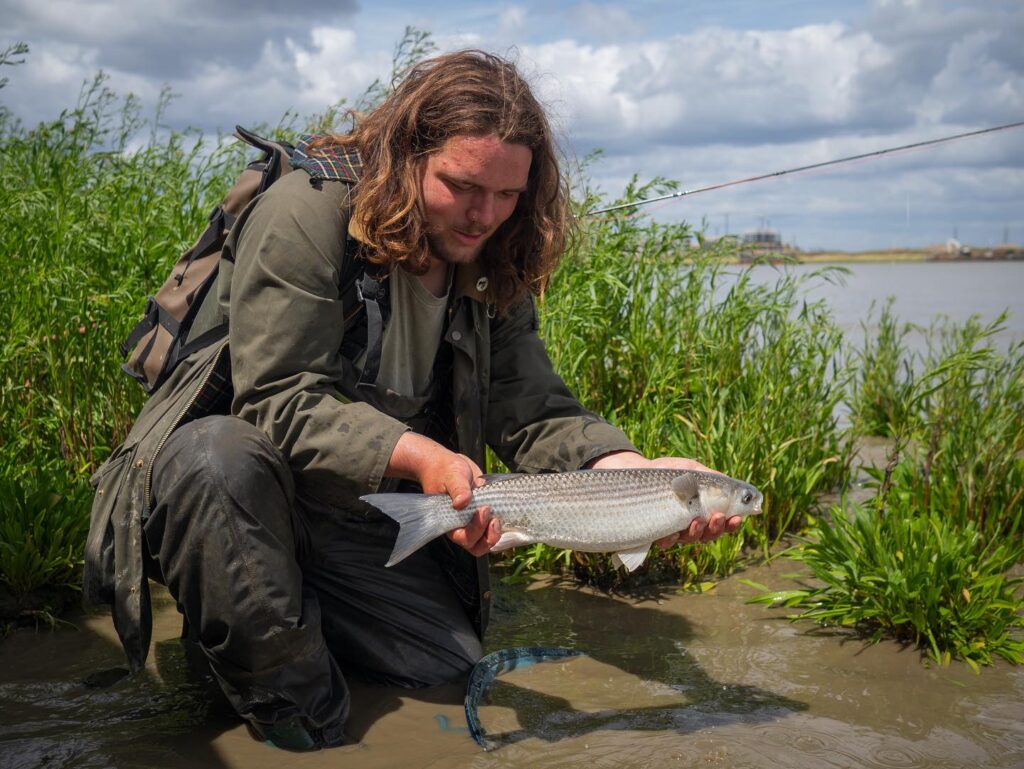
How do you enjoy targeting the wrasse most on the fly? What is a breakdown of the method?
In the UK, we have 5 main species of wrasse, all of which can be found across the uk, but some being more common in certain areas. The two you’re most likely to come across are…
1. Ballan wrasse
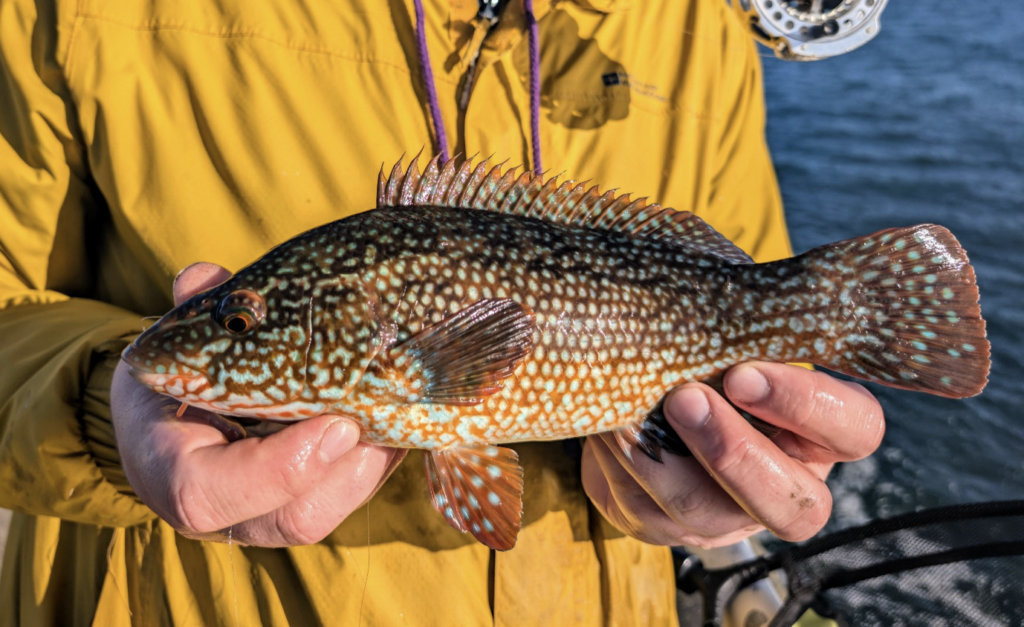
2. Corkwing Wrasse
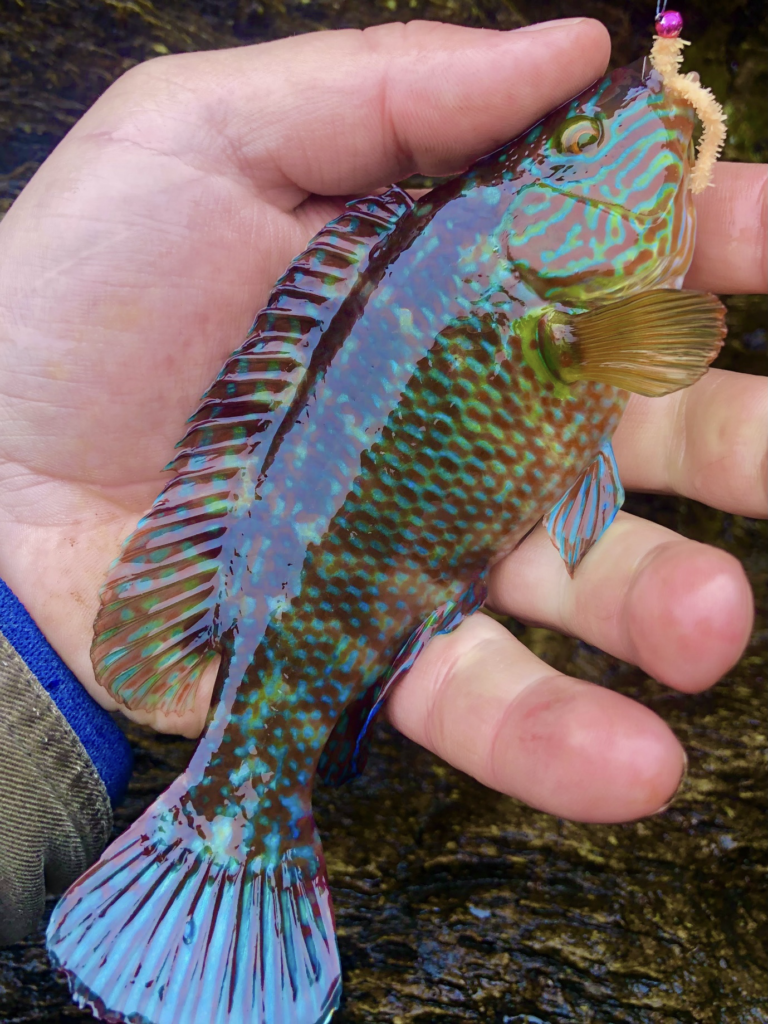
All of the common wrasse species are rocky reef fish, loving any kind of structure, be it a kelpy gully, or rock armour or a harbour wall, they’re a fairly widespread group of fish.
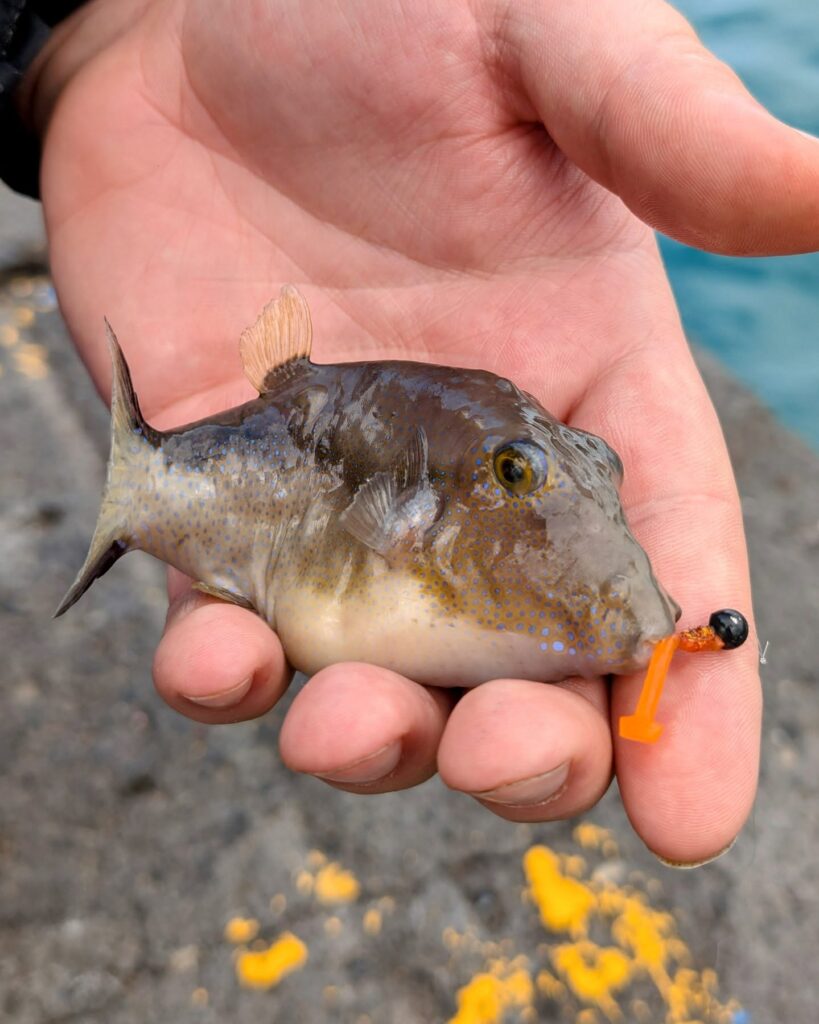
Sinking lines vs Nymphing line for wrasse fishing
When targeting wrasse on the fly there’s really two main methods. You can either fish a sinking line, or fish in a style that’s more akin to euro-nymph tactics used for freshwater fish. Out in Norway with the guys over at Learn The Land, we use predominantly sinking lines, but in the UK I will often use a monofilament/flurocarbon mainline or nymphing line and use a fairly heavily weighted fly.
Your fly should be amongst the snags, and weedless flies can help
The main thing to keep in mind when targeting wrasse, regardless of what line you use, is that your fly needs to be as close to the bottom as you can get away with and moving erratically with fairly long pauses. Weighted flies are almost necessary and I use tungsten beads with diameters of up to 6.4mm fairly regularly. In clearer areas with less snags, teams of 2 or even 3 flies can be used, but if its snaggy a single fly will often work better. In especially kelpy situations, a weedless fly may be required to prevent constant snags.
Are there any challenges in terms of targeting wrasse on the fly?
The main challenges to targeting wrasse are bite detection, and presenting your fly in deep water. The wrasse themselves aren’t particularly difficult to trick into eating a fly, it’s just about getting a fly down to them, and then being able to tell that the fish has taken said fly. This is the main benefit of the “nymph” style of fishing for them, as the mono/nymph line has greater sensitivity than the thicker more conventional lines, and the heavier weighted flies allow you to get down into a gully more quickly.
What hook size for wrasse on the fly?
The tackle you use really depends on what sized wrasse you’re targeting. I use anything from size 16 hooks for goldsinny wrasse or corkwings, up to size 8 or larger for the bigger ballans.
Which rod weight is best for wrasse on the fly?
Same with rod choice, when targeting small wrasse I’ll often use a 000wt rod for the sheer fun of it, but you may need to go as heavy as a 6/7wt to deal with large, powerful ballan wrasse. For a general wrasse fishing setup though, i’d probably recommend a 9-11ft 4wt. The length of the rod is mostly down to personal preference, with shorter rods being more sensitive, but longer rods having a greater reach. Its a similar story with tippet, really its dependent on what sized wrasse you’re catching, with anything from 4lb-20lb tippet being appropriate depending on location and size of fish.
What do you reckon the best flies are for wrasse fishing?
The fly choice is likely the least important aspect of wrasse fishing. Generally anything that’s heavy enough to get down and stay down will work. I’m a particular fan of worm flies, with squirmy worms and gummy chenille making up the majority of my saltwater fly box, though small clousers, crab flies, shrimp flies and many bonefish/permit patterns will work as well. I prefer flies that are red, pink, orange, coral, or chartreuse, but again it likely doesn’t make a huge amount of difference.
A few of Elijah’s favourite wrasse flies:
